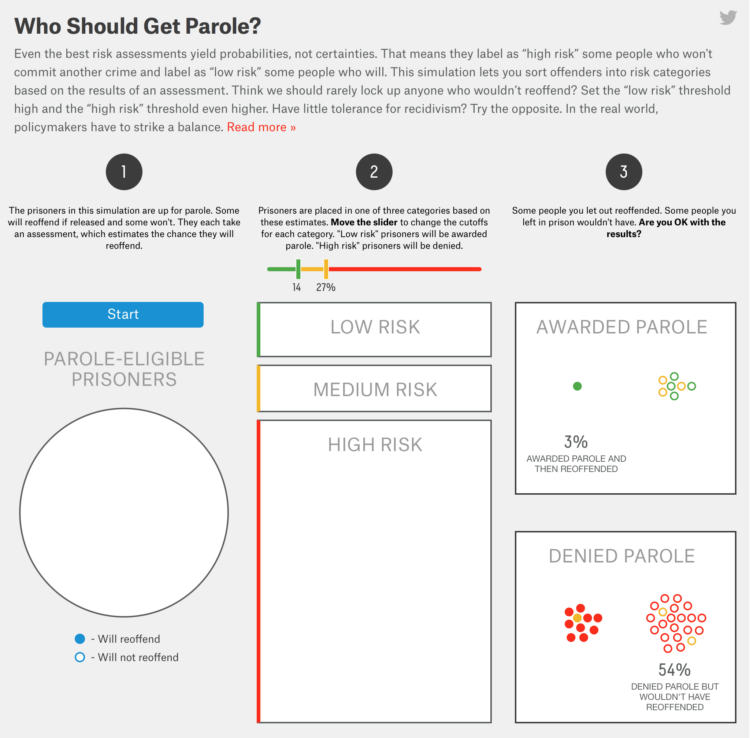Pennsylvania is considering the use of risk assessment — the chances that someone will commit a crime in the future — in criminal sentencing. Risk assessment is already used in every state to some regard, so why not extend the concept? FiveThirtyEight and The Marshall Project look at the WTF-ness of this question.
It’s worth reading the full feature, but two interactives that help understand the statistics is of special interest here.
The first, shown above, simulates parole judgements based on the risk thresholds you choose. On the left, the population of parole-eligible prisoners appears. Each small bubble represents a person. Moving on to step two, each person is marked as some level of risk. The high risk people are denied parole in the third step. Set the thresholds high, and most people are denied parole but more people who end up never committing another crime stay in prison. Set the thresholds high, and you end up with more people getting parole but more who reoffend.
What’s the right balance?
The second interactive shows how bias towards race and class are embedded in risk assessment, even though there aren’t any direct questions about these things. Check off boxes as if you were making an assessment, and you get distributions of blacks, Hispanic, and low-income populations.
So it’s an important topic explained bolstered by a statistics lesson. Read it.


